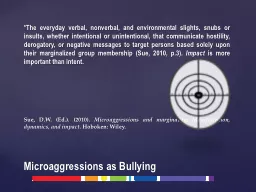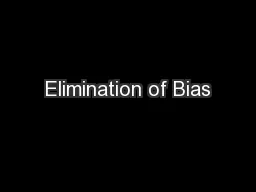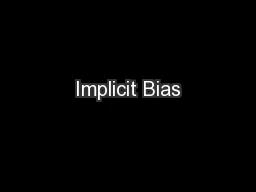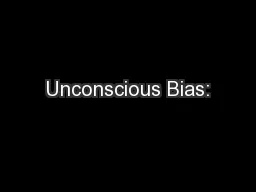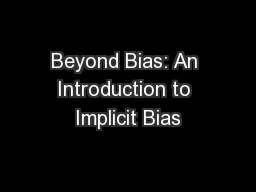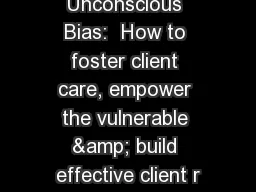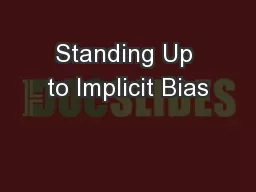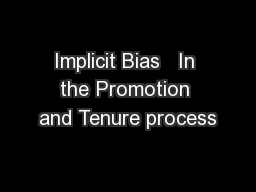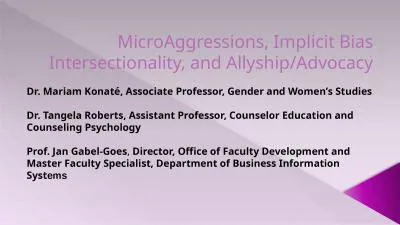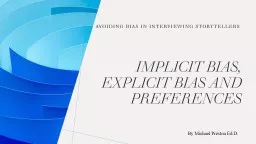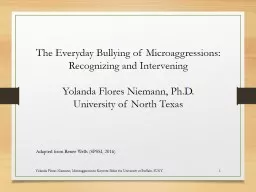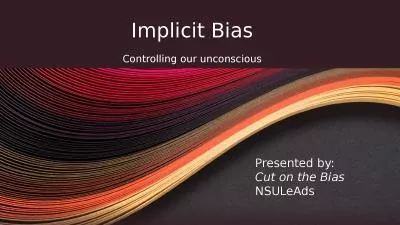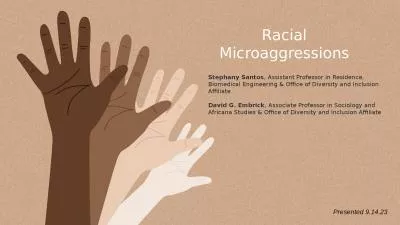PPT-Microaggressions and Implicit Bias
Author : briana-ranney | Published Date : 2017-09-28
Presentation to University of Houston Department Chairs By Derald Wing Sue PhD Teachers College Columbia University Race Talk January 2015 In Memory of Maya Angelou
Presentation Embed Code
Download Presentation
Download Presentation The PPT/PDF document "Microaggressions and Implicit Bias" is the property of its rightful owner. Permission is granted to download and print the materials on this website for personal, non-commercial use only, and to display it on your personal computer provided you do not modify the materials and that you retain all copyright notices contained in the materials. By downloading content from our website, you accept the terms of this agreement.
Microaggressions and Implicit Bias: Transcript
Download Rules Of Document
"Microaggressions and Implicit Bias"The content belongs to its owner. You may download and print it for personal use, without modification, and keep all copyright notices. By downloading, you agree to these terms.
Related Documents


